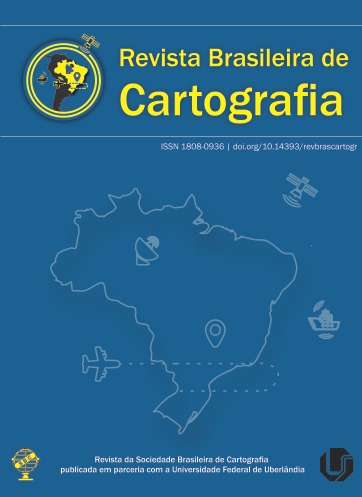Positional Accuracy in Cartographic Data Using Linear Features Methods: Final Points, Intermediate Points, Generated Point, Vertex Influence, Double Buffer Normalization and Fuzziness Factor
Main Article Content
Abstract
In recent years, the use of linear features has been frequently investigated in cartography quality control, and several methods have been proposed to assess positional accuracy. In this sense, the present work aimed to link the tolerances defined in Decree nº 89.817, and the Technical Specification for Quality Control of Spatial Data (ET-CQDG) in the methods of linear features: End points, Intermediate Points, Generated Point and in a proposed adaptation to the Fuzziness Factor method. In the end, such methods were compared with the linear feature methods already applied in Brazil, which are: Influence of the Vertex and Normalization of the Double Buffer. For this purpose, the planimetric positional accuracy of an orthomosaic in the municipality of Viçosa-MG was evaluated, where the results obtained showed that the methods, Final Points, Vertex Influence, Factor Fuzziness and the Buffer Double normalization method obtained classification Class A planimetric scale for the 1: 1,000 scale. The Intermediate Points and Generated Point methods, on the other hand, presented Class B in the 1: 1,000 scale.
Downloads
Metrics
Article Details
Authors who publish in this journal agree to the following terms:
- Authors retain copyright and grant the journal right of first publication with the work simultaneously licensed under a Creative Commons Attribution License that allows others to share the work with an acknowledgment of the work's authorship and initial publication in this journal.
- Authors can enter into separate, additional contractual arrangements for the non-exclusive distribution of the journal's published version of the work (e.g., post it to an institutional repository or publish it in a book), with an acknowledgment of its initial publication in this journal.
- Authors are permitted and encouraged to post their work online (e.g., in institutional repositories or on their website) before and during the submission process, as it can lead to productive exchanges, as well as earlier and greater citation of published work (see "The Effect of Open Access").





